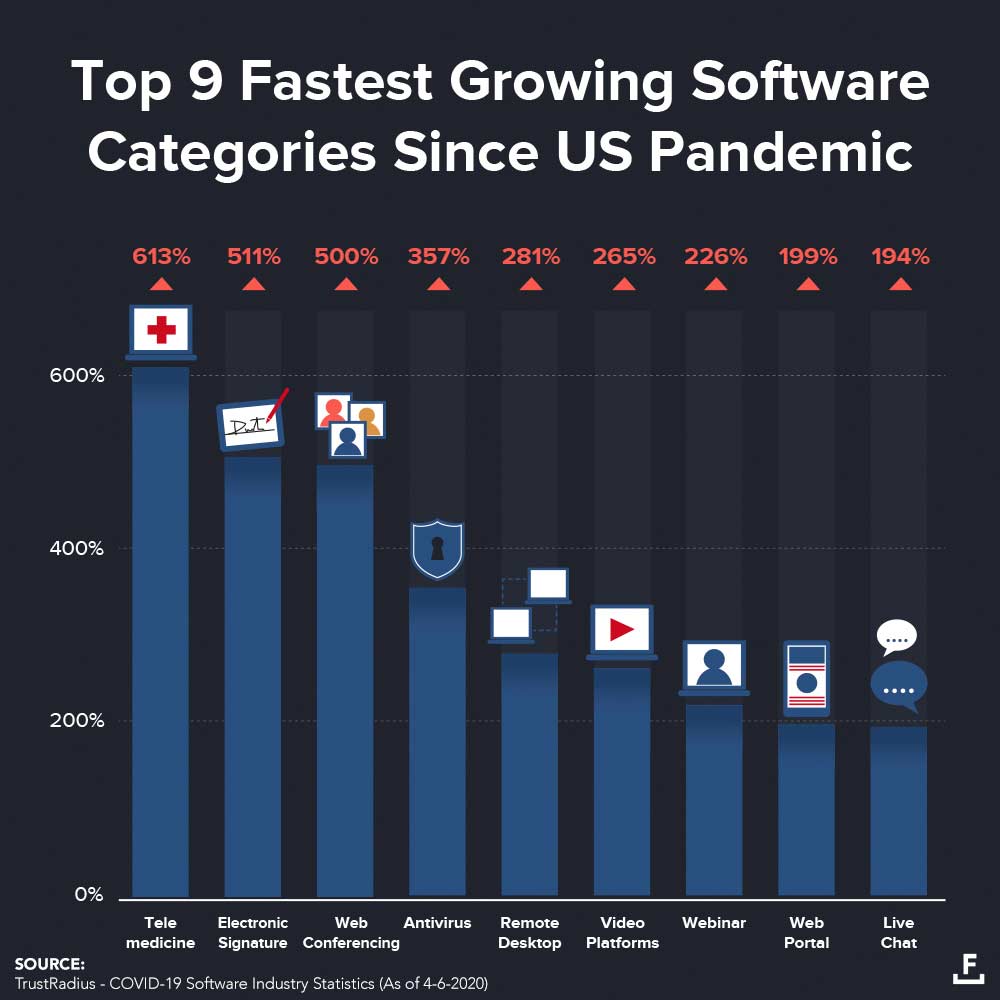The Rise of Marketing Technology Prioritization will be driven by COVID-19
COVID-19 has accelerated the pace of E-Commerce and Digital Commerce dominance. As the world’s local retail stores were shutting their doors in early 2020, E-Commerce was experience explosive growth. According to the World Economic Forum, “In the first quarter of 2020, department store sales and those from other “non-essential” retailers declined by 25%. This grew to a 75% decline in the second quarter.” As the WEF reported, “E-Commerce is projected to grow by nearly 20% in 2020”.
Many financial analysts and E-Commerce businesses have estimated that COVID-19 has accelerated E-Commerce adoption by as much as 4-6 years.
• According to a June report Adobe released, they showed total online spending in May hit $82.5 billion, up 77% YOY.
• According to Statista, 52% of U.S. adults shopped online in May, 2020
• Shopify’s 3rd Quarter earnings reported revenue of $767M, up 96% from last year.
If you’re already online, you’re probably relieved to be on this side of the COVID-19 economic equation. Unfortunately, many local retailers that have not yet adopted a solid E-Commerce strategy are feeling the strain of COVID in new ways.
Beginning in February, U.S. Internet users began to reduce their foot traffic in local stores by over 52% –Statista. Note: Beginning in November of 2020, Azola Creative began launching free workshops to help local retailers open a micro E-Commerce store. If you know of someone who could benefit, please share this link with them.
How does the Software as a Service (Saas) industry fair during COVID?
Software as a Service or SaaS companies have been met with mixed results during COVID-19. Many SaaS companies, despite being technology driven in their products, do not always have the best sales & marketing technology to drive leads. According to Crunchbase, there are over 15,000 SaaS companies in the world. This includes companies that have transitioned from an on-prem to cloud solution. Many older SaaS companies struggle with profitability because they do not operate as lean as modern startups.
COVID’s Effect on Lead Generation through Conferences and Live Events
Profitability is already a threat to SaaS companies irregardless of COVID, but with many still driving leads from conferences, the lack of events in 2020 has greatly exposed the need for greater marketing technology strategies. According to Forbes, Coronavirus Cancellation Tracker, more than 83 million (would be) attendees have been affected by event cancellation.
It’s not all doom and gloom for SaaS companies. If you’re in the teleconference space, you likely experienced a strong pop in sales during COVID. The biggest vertical in teleconference technology was not surprisingly, TeleHealth solutions, which according to Foundation Inc. experienced 613% growth since the beginning of the U.S. COVID Pandemic.

How Do You Prepare for a Growing Digital Commerce Marketplace?
There’s no longer a lack of urgency in developing your marketing technology strategy. If you’re not already thriving with an E-Commerce store or a Digital Lead Generation strategy, COVID has just costs you approximately 5 years of waiting to get there.
Panicking will get you nowhere, procrastination will leave you for dead. Therefore, suck it up and get proactive about developing your online business.
We recently outlined a marketing technology checklist you should incorporate for 2021. Now is the time to look at everything you’re doing or not doing online. It’s okay if you can’t do it all, don’t let the tasks at hand get the best of you. Instead, do the following:
Strategic Planning
Focus on three things you want to do or need to do in order to kickstart your digital commerce business. Maybe it’s launch a website. Maybe it’s to start participating in social. Maybe it’s to open an E-Commerce store. Define the things, no matter how big or small that will get you where you need to be.
Tactical Planning
What are the tactical things you need to do to be more successful? Do you need to create more content, buy a domain name? Re-engage with old customers? List out all you can think of that could help you reach your strategic goals.
Operational Planning
Now that you know where you want to go and you know what you need to do to get there, start focusing on what your resources are to obtain your success. If you can’t do it yourself, can you afford to hire someone to do it for you? If you can do it yourself, how many hours a week can you commit to it? If you have colleagues or employees, can they effectively execute on what you need done?
A more aggressive digital operations plan is no longer if, or even when. It’s now and you need to get on board quickly. Again, don’t panic, just get going!

